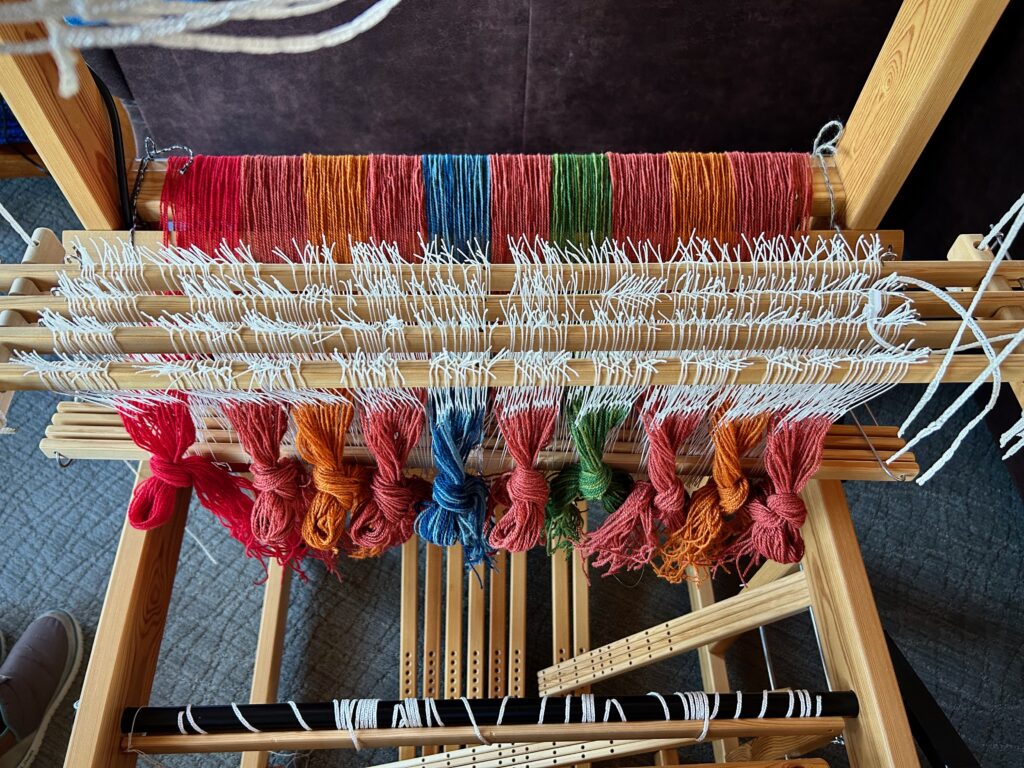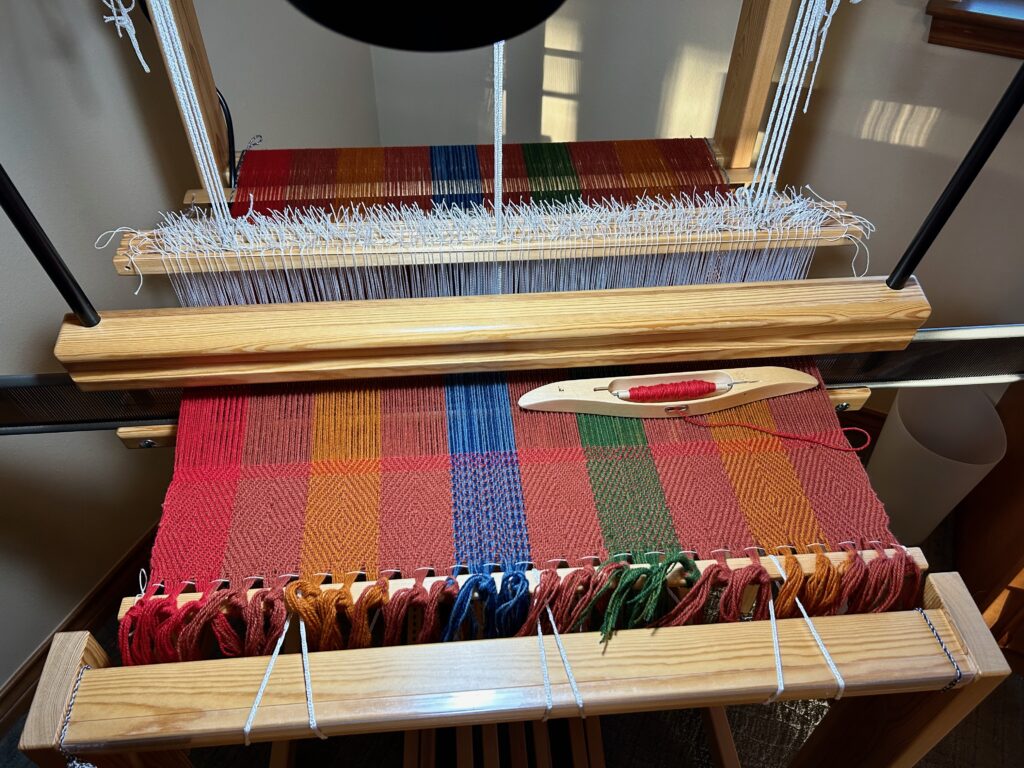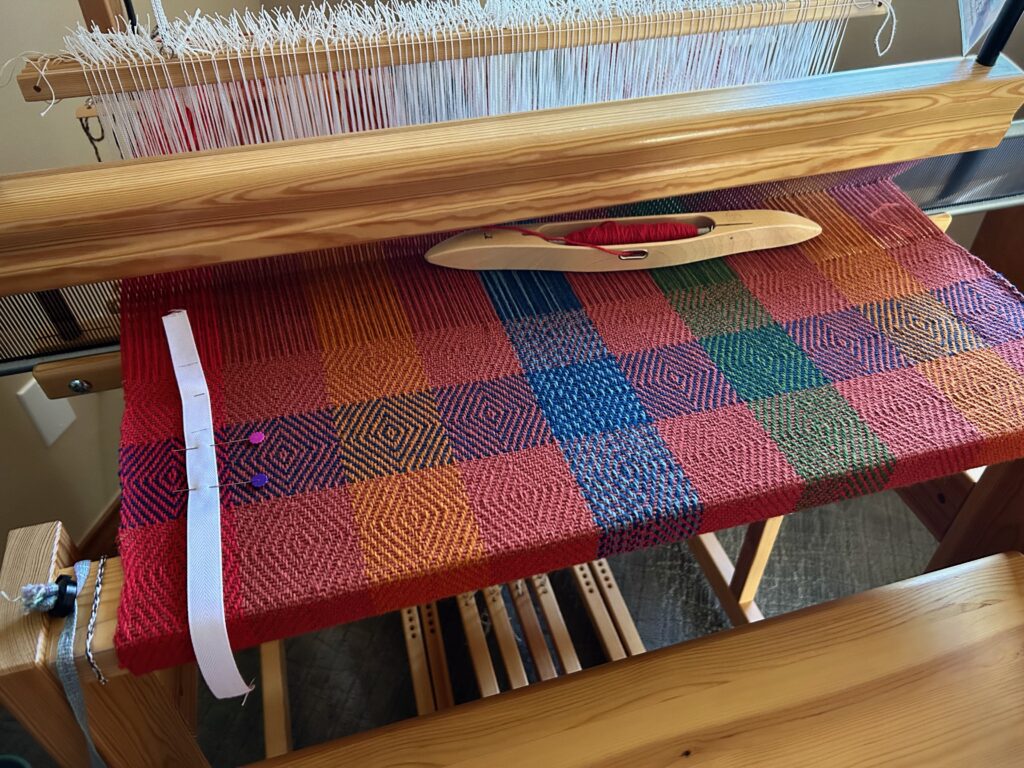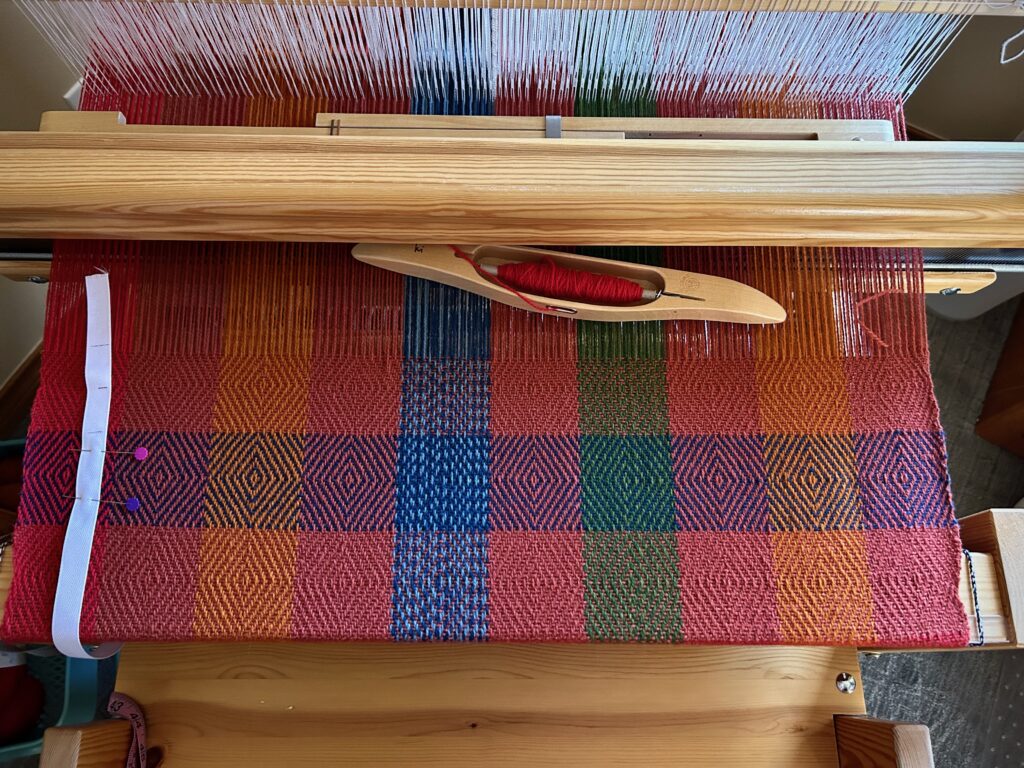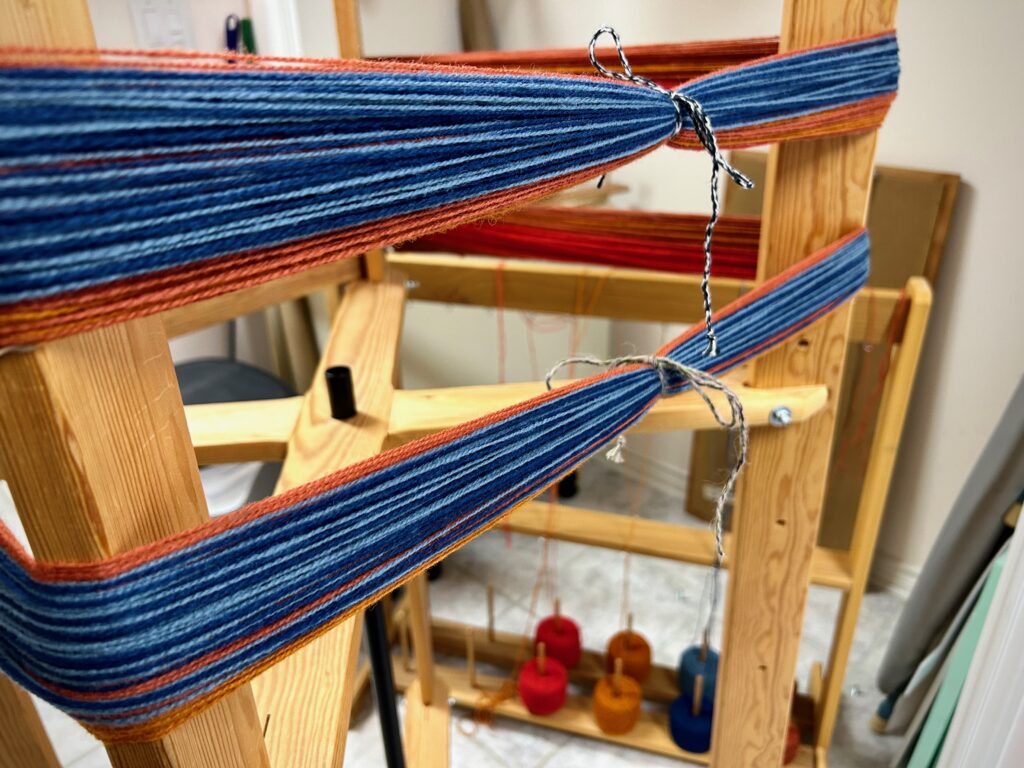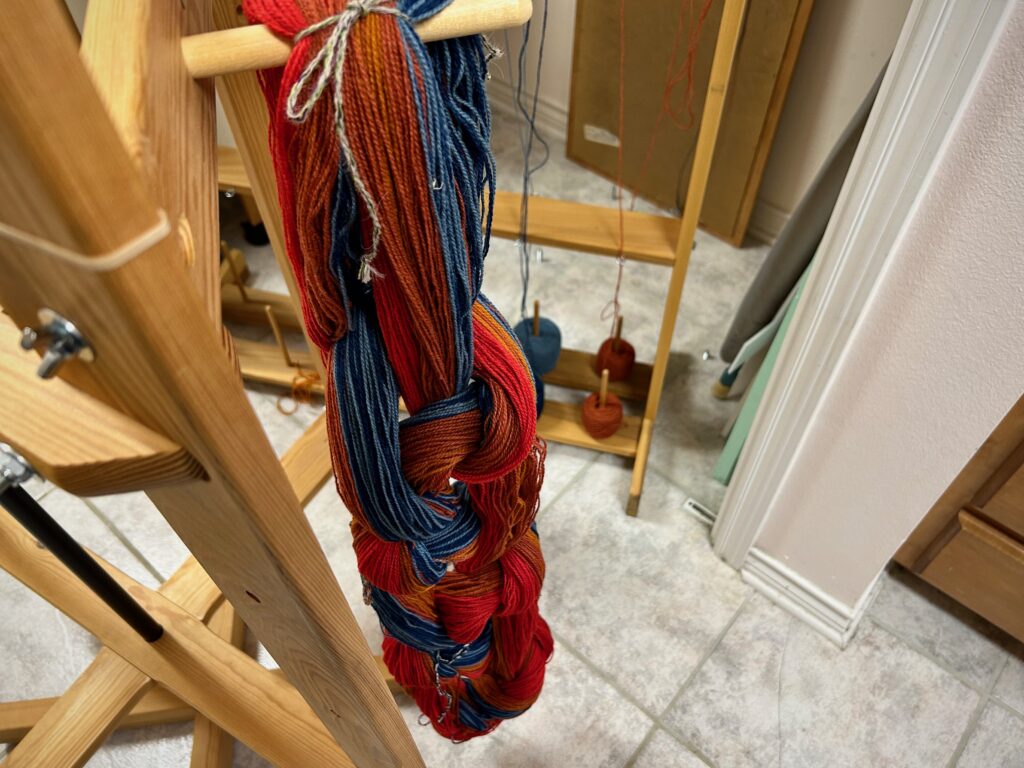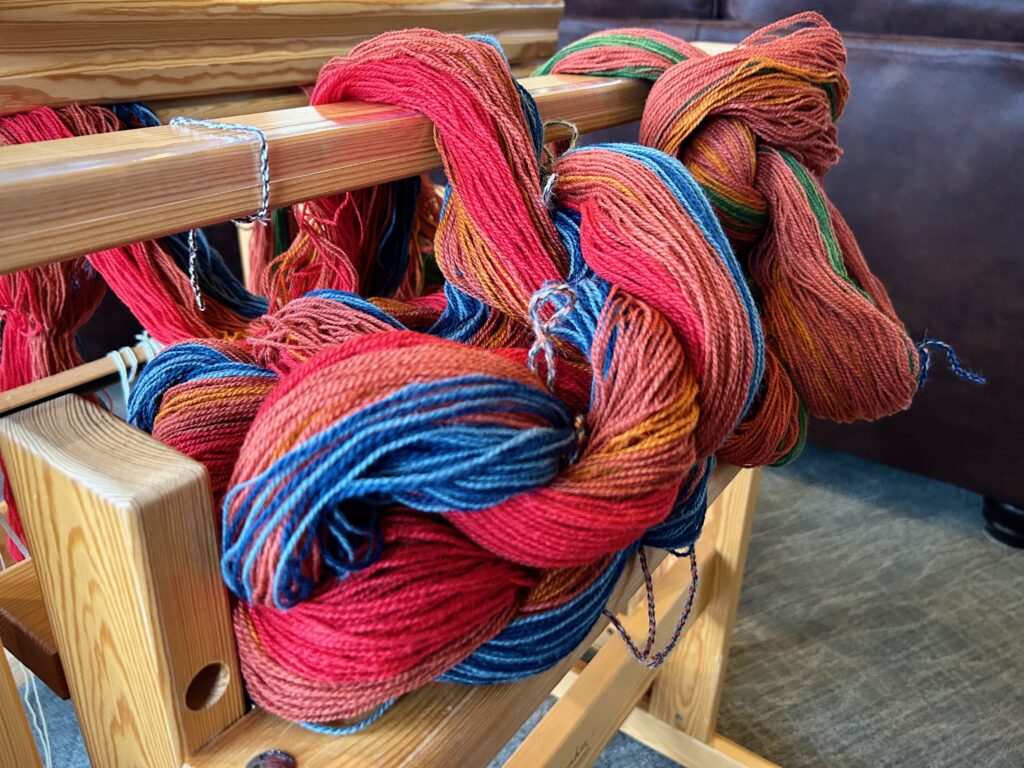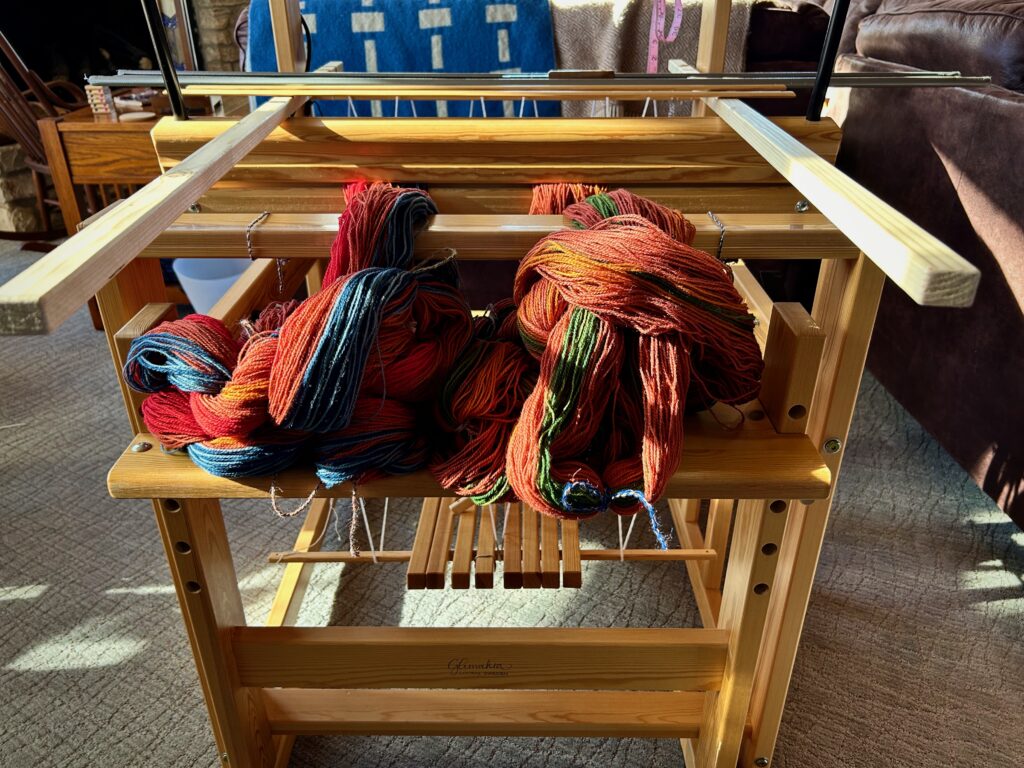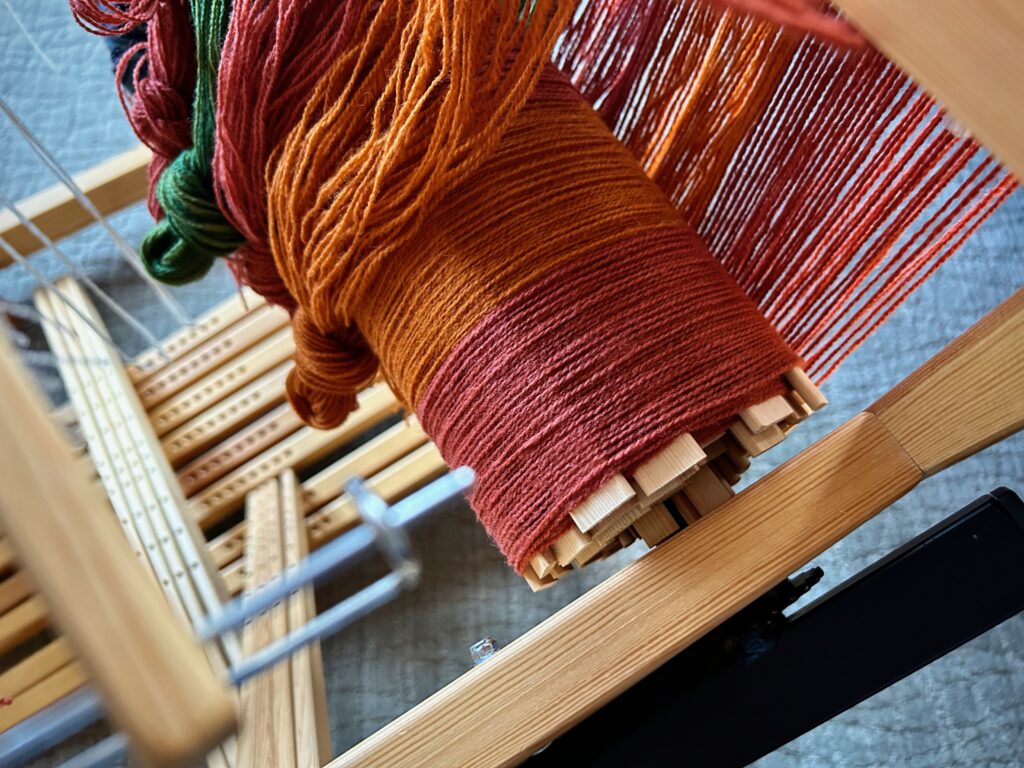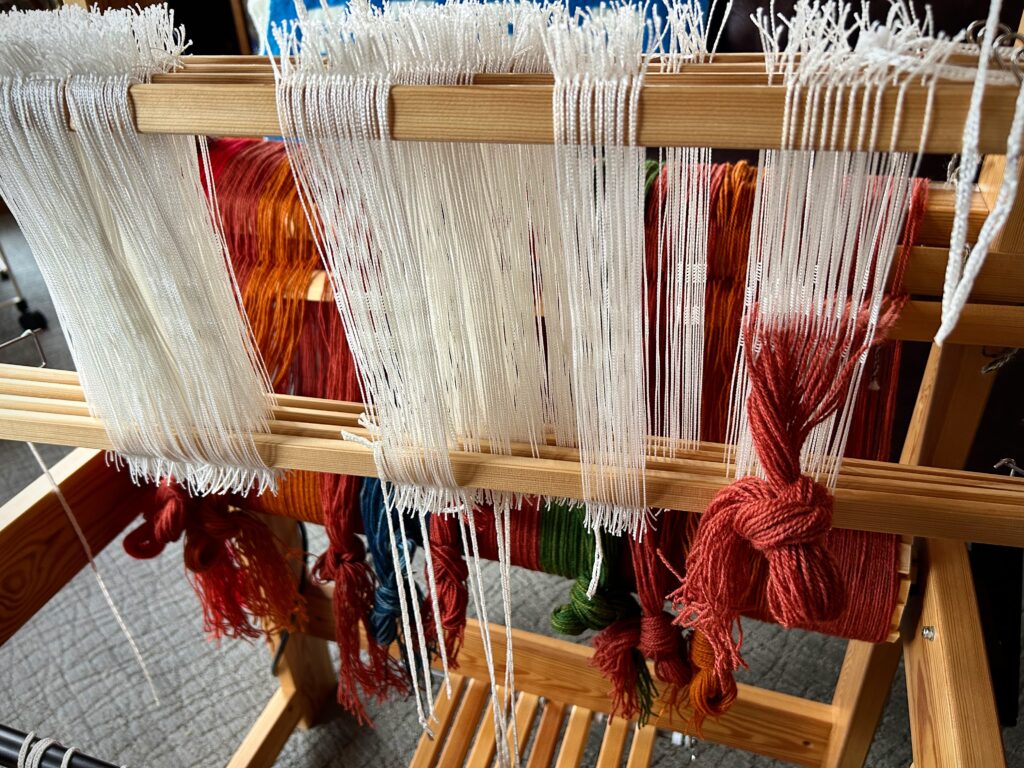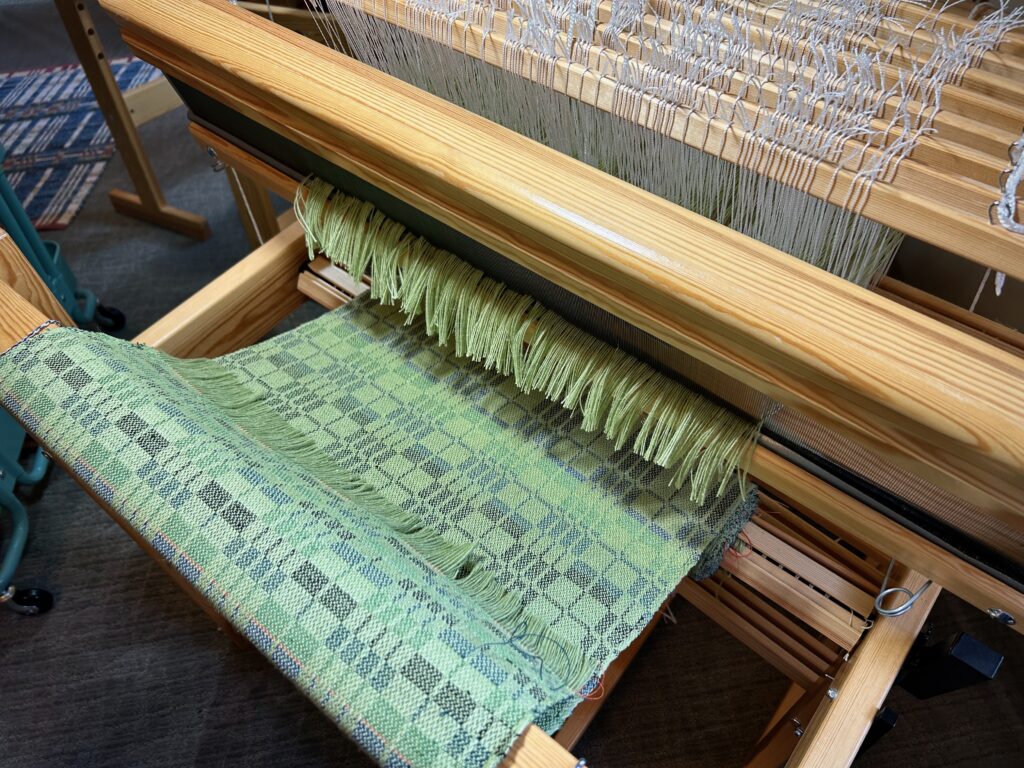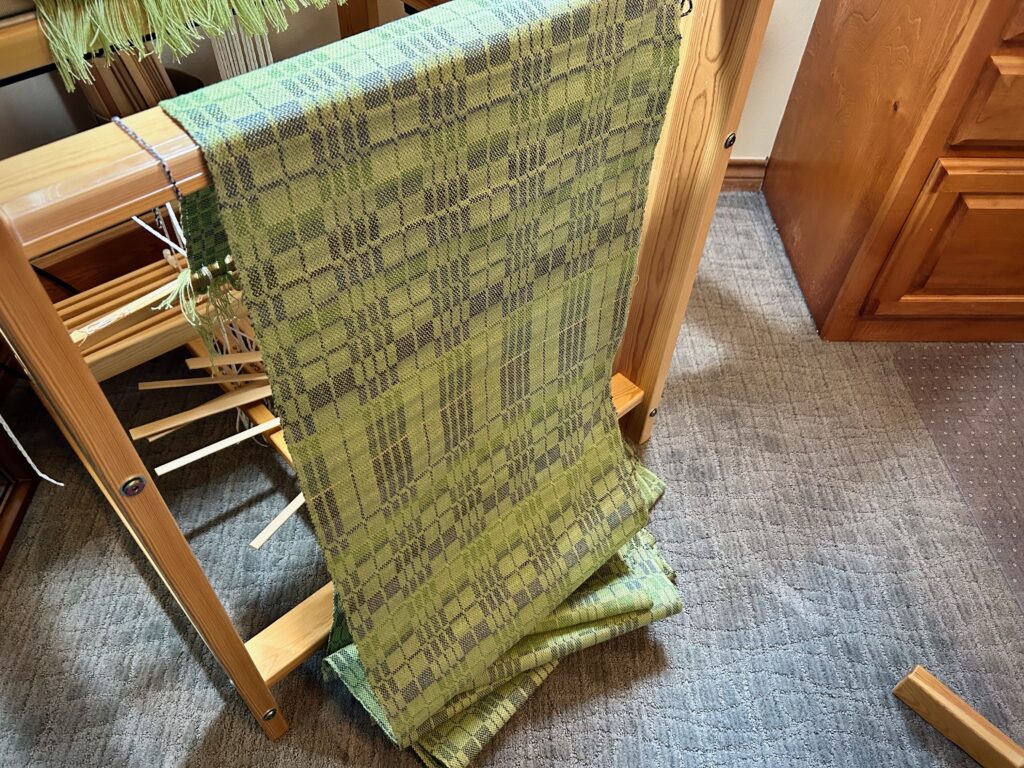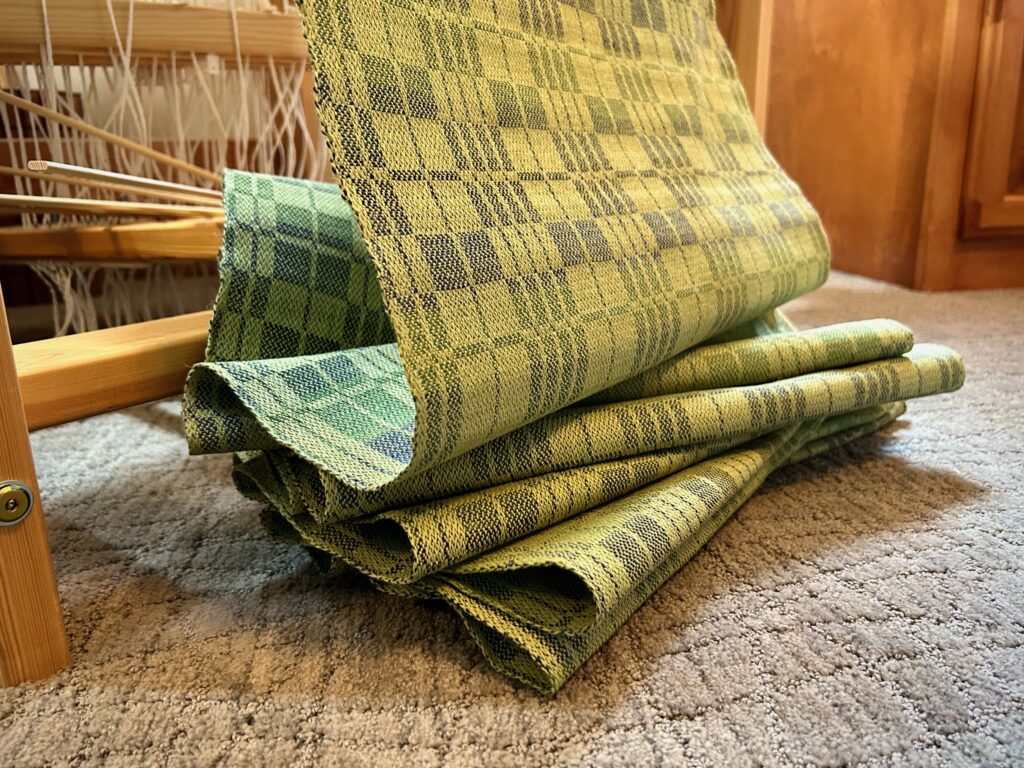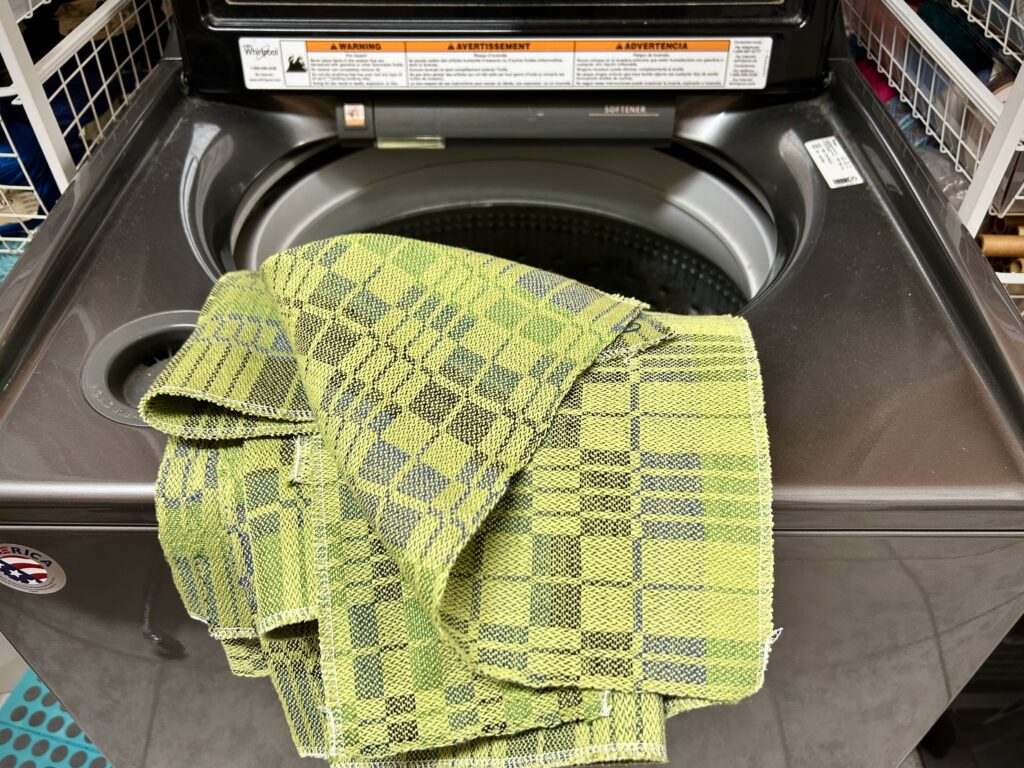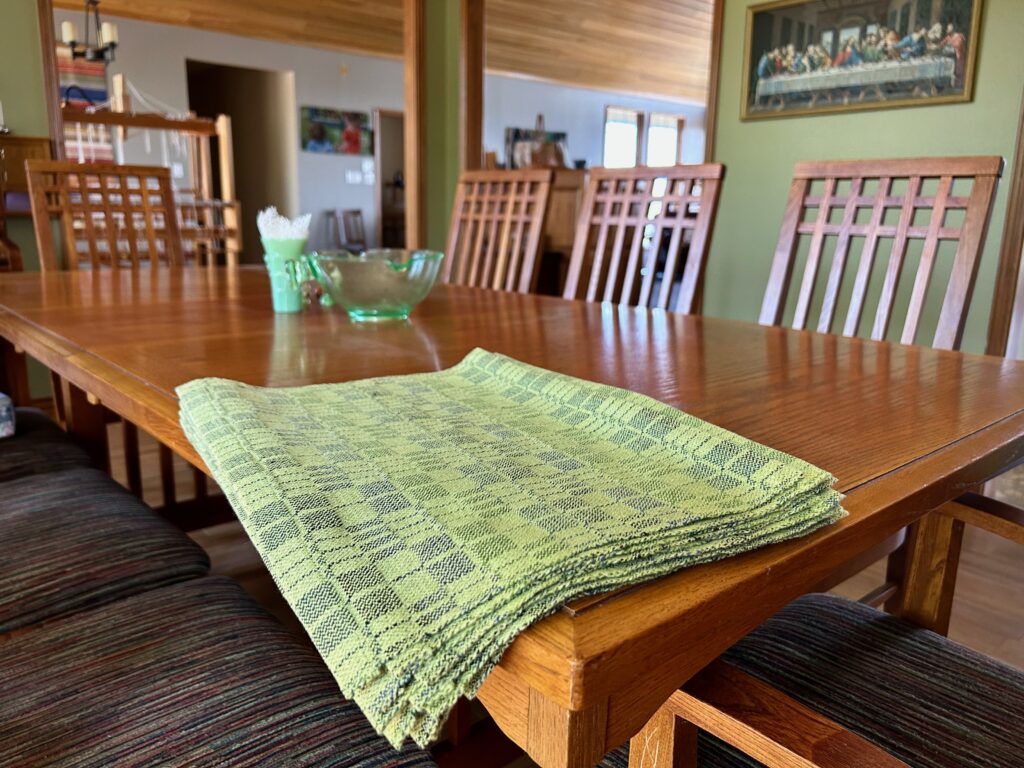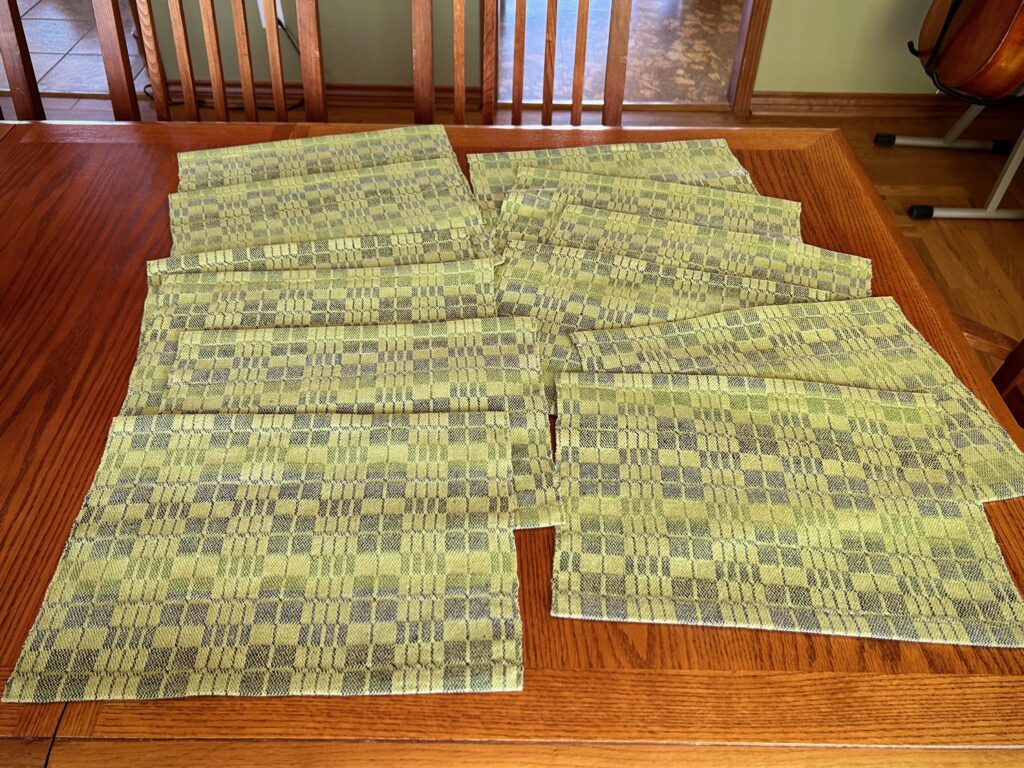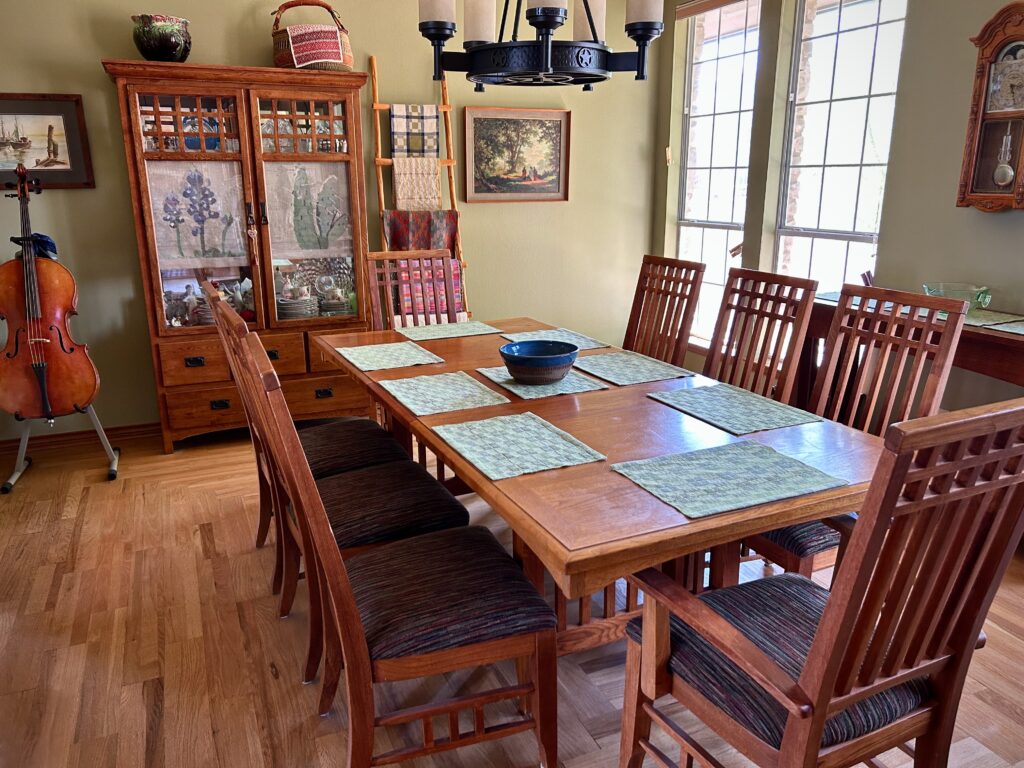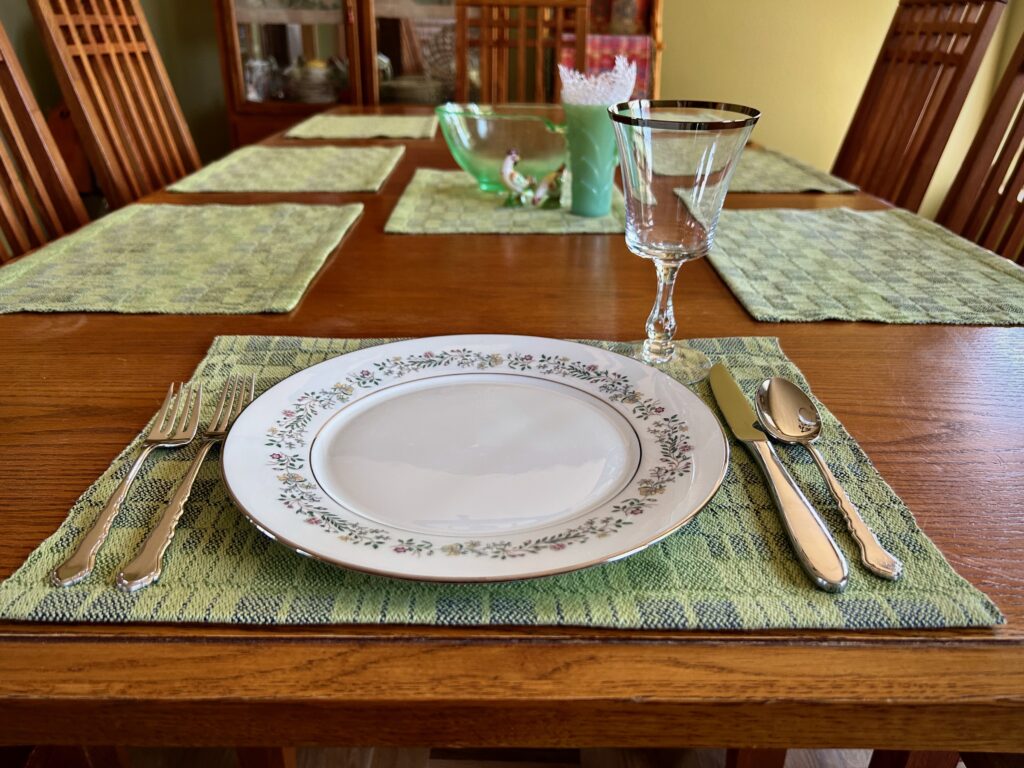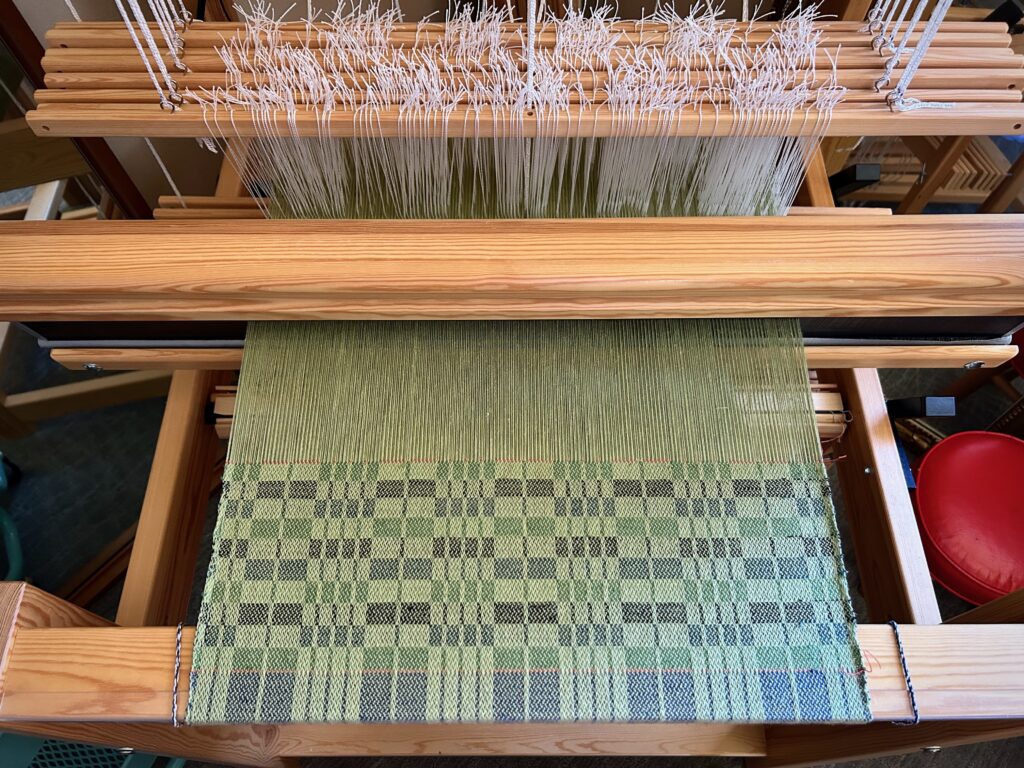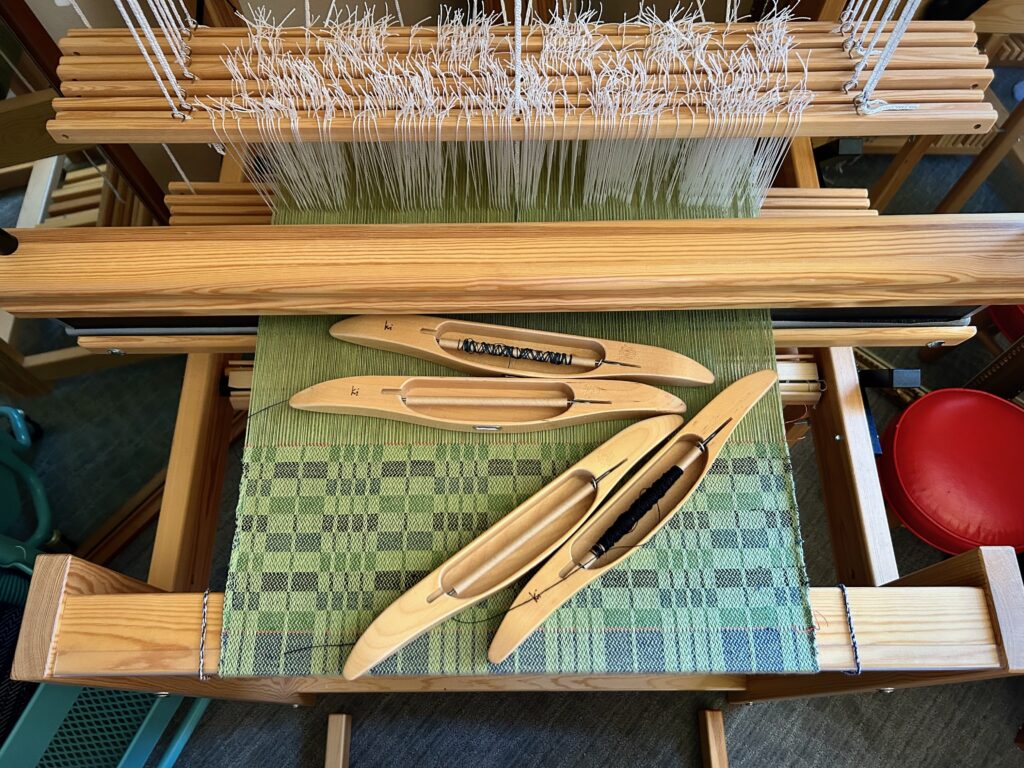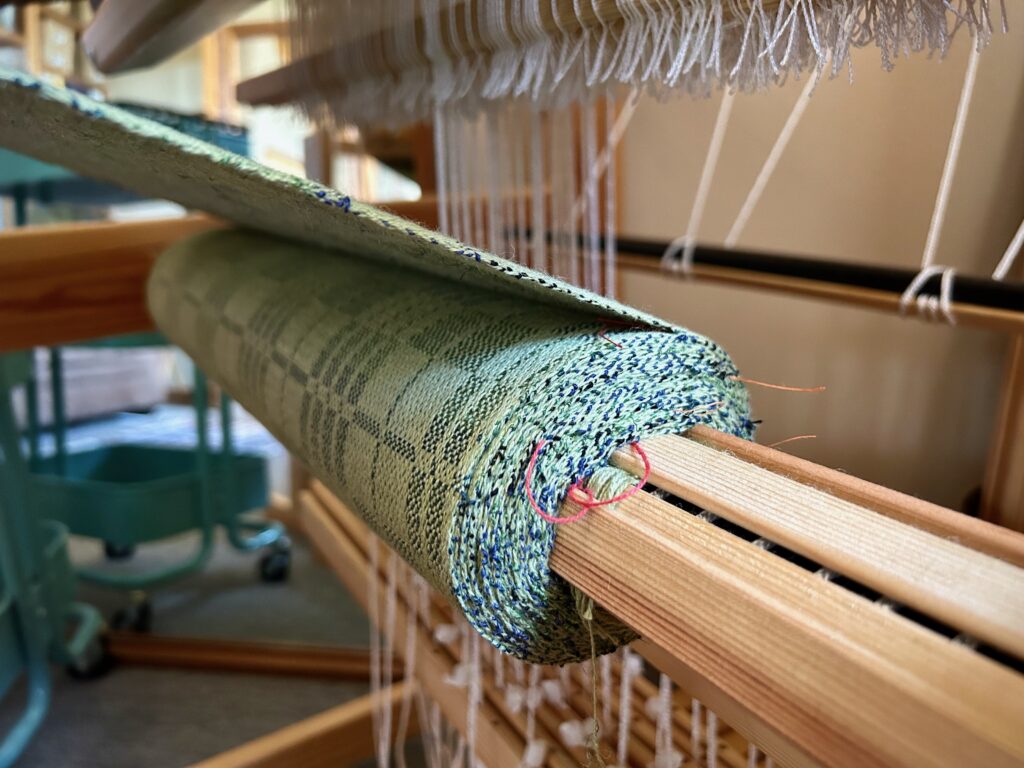The Glimåkra Standard is where I am most comfortable, even though the reach of the full width is stretching me. The curtains for the bathroom are progressing. No new news, just continuation of adding cloth to the cloth beam.
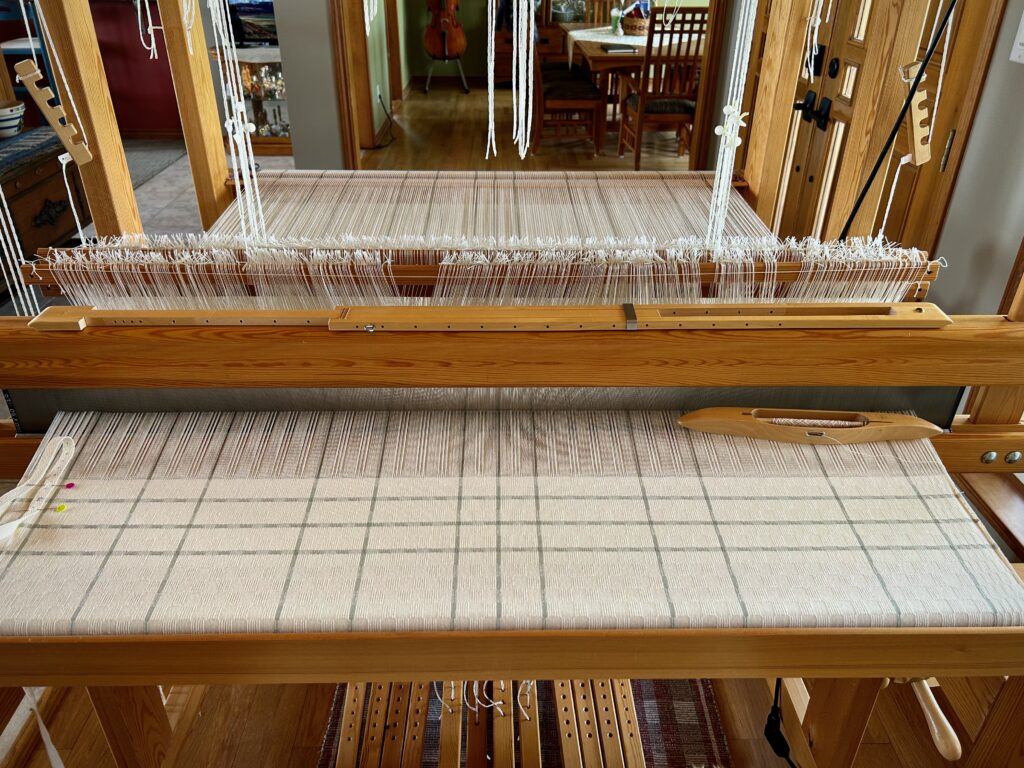
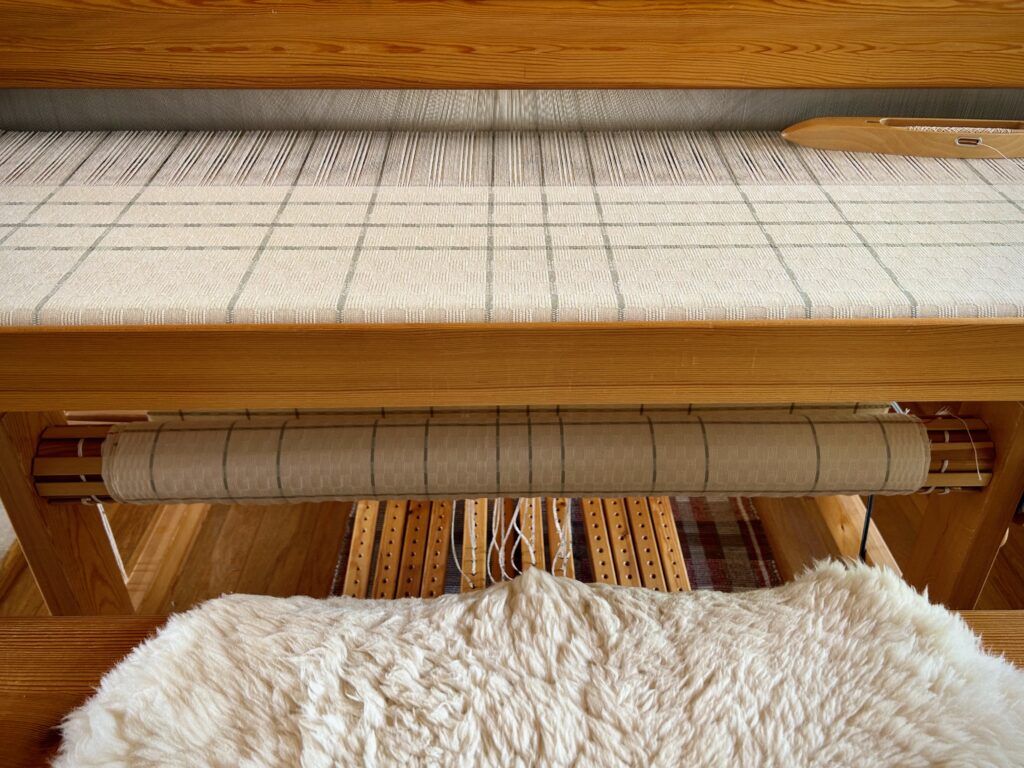
The Glimåkra Ideal is patiently waiting for a new tapestry warp. I have a bit more design work to do on the cartoon, and then I’ll be winding the warp with the 16/2 linen I have set aside just for this project. I’m eager to show the new tapestry idea to you! Soon!!
I am finishing up the next critter napkin design for the drawloom. This one is a roadrunner, and it is just…about…ready…to weave.
The Glimåkra Julia is getting filled up on the cloth beam, too. This wool goose-eye fabric is going to be fun to sew into a winter cape when it comes off the loom!
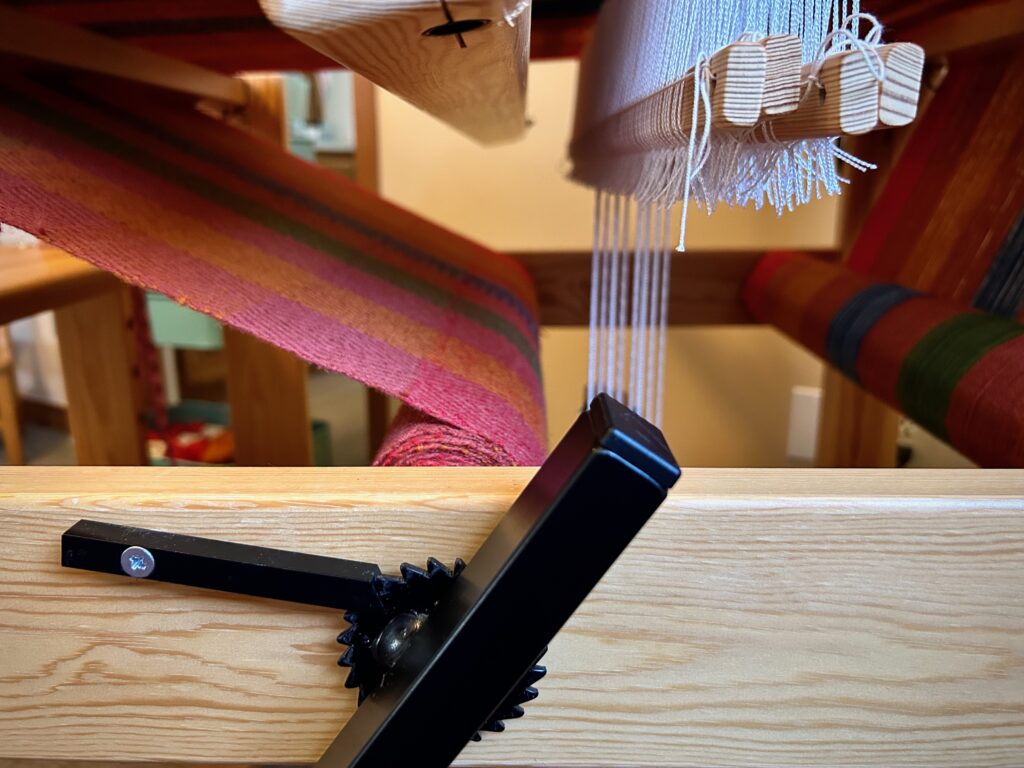
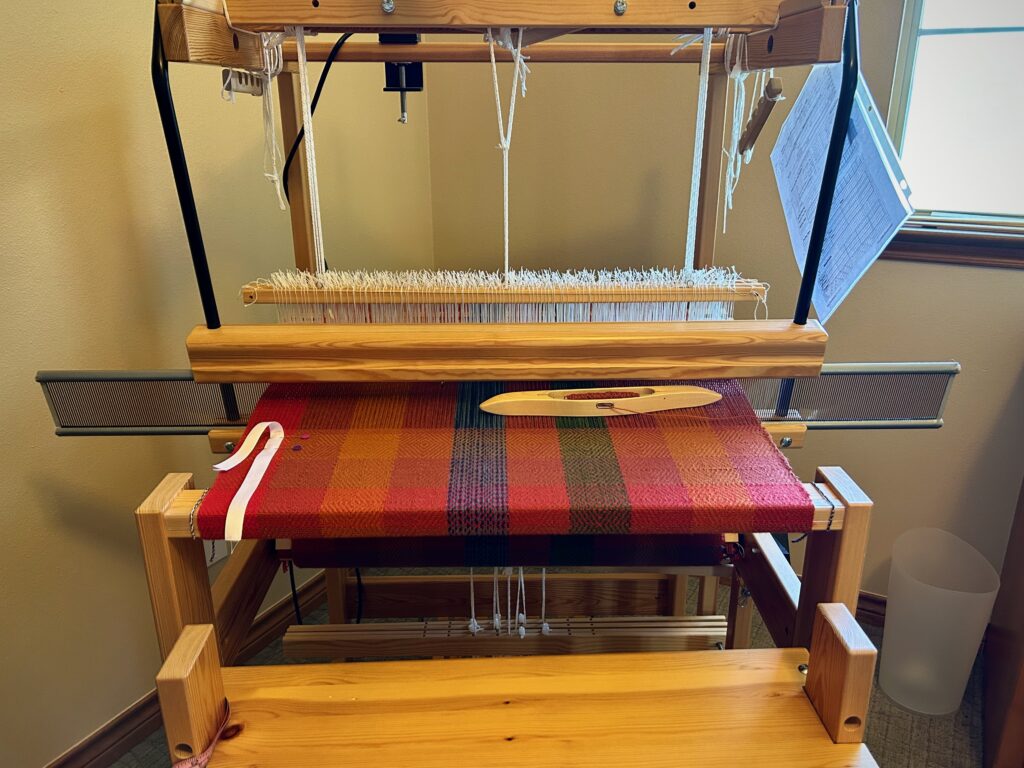
And finally. Drumroll. After a year of sitting on the sidelines after having been cut from the loom, two small tapestries are now hanging on our walls. I did the finishing work of adding a slat for hanging, stitching a backing in place, including some zigzag quilting stitches for support, and stitching up the sides and the hem.
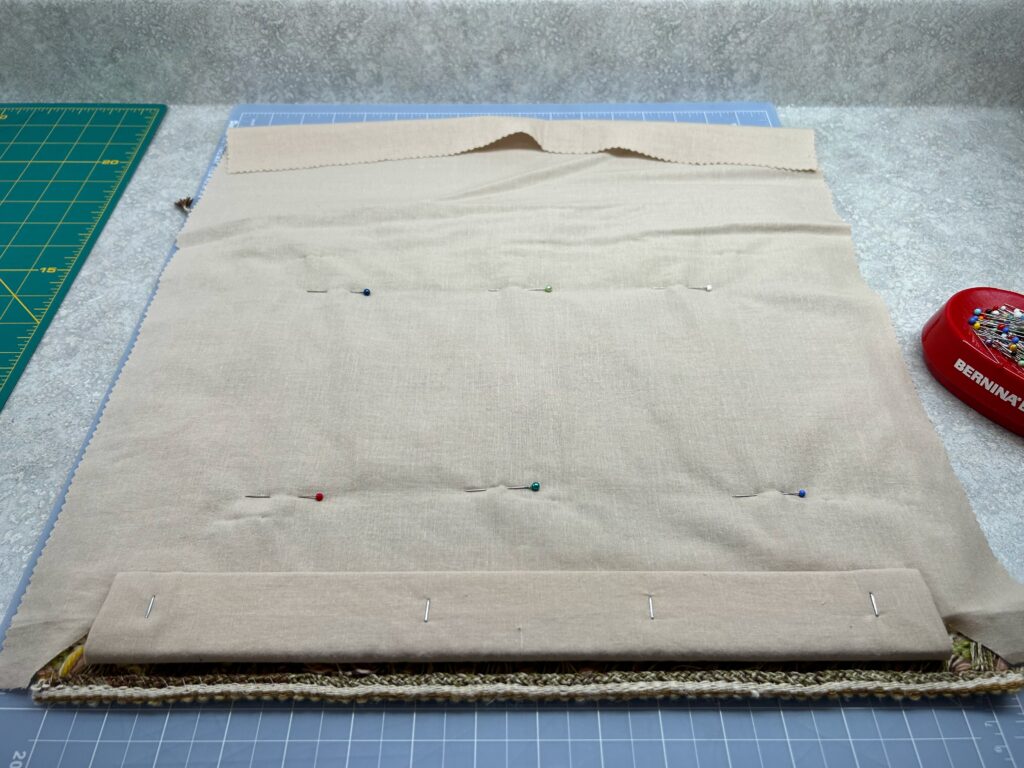
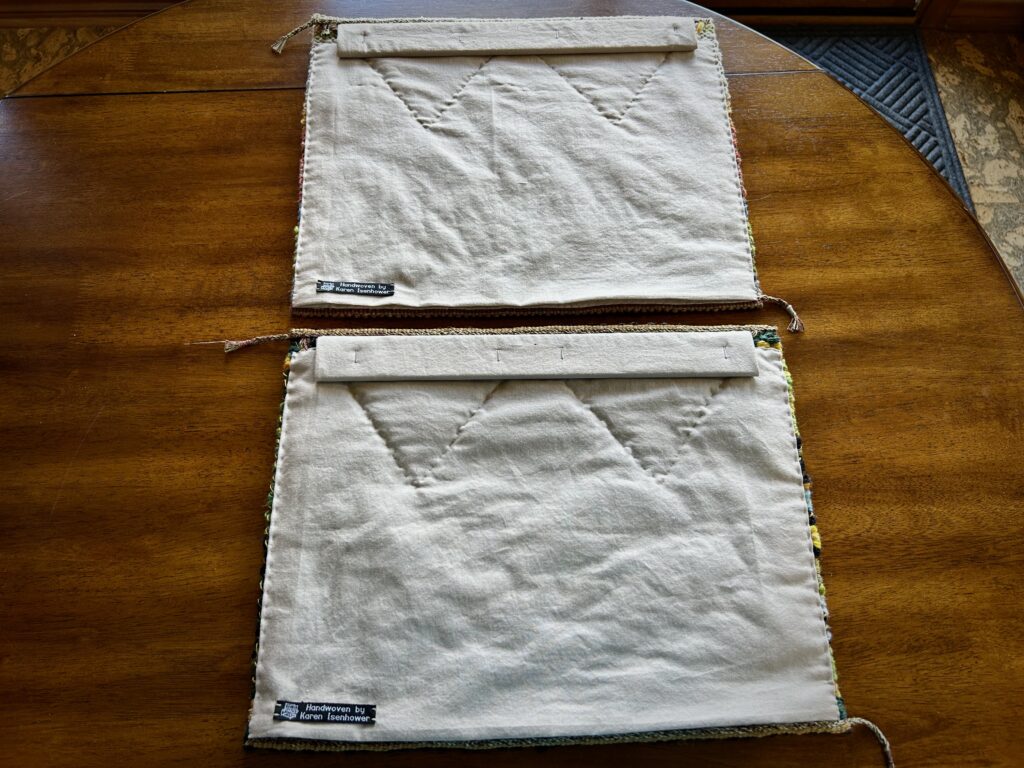
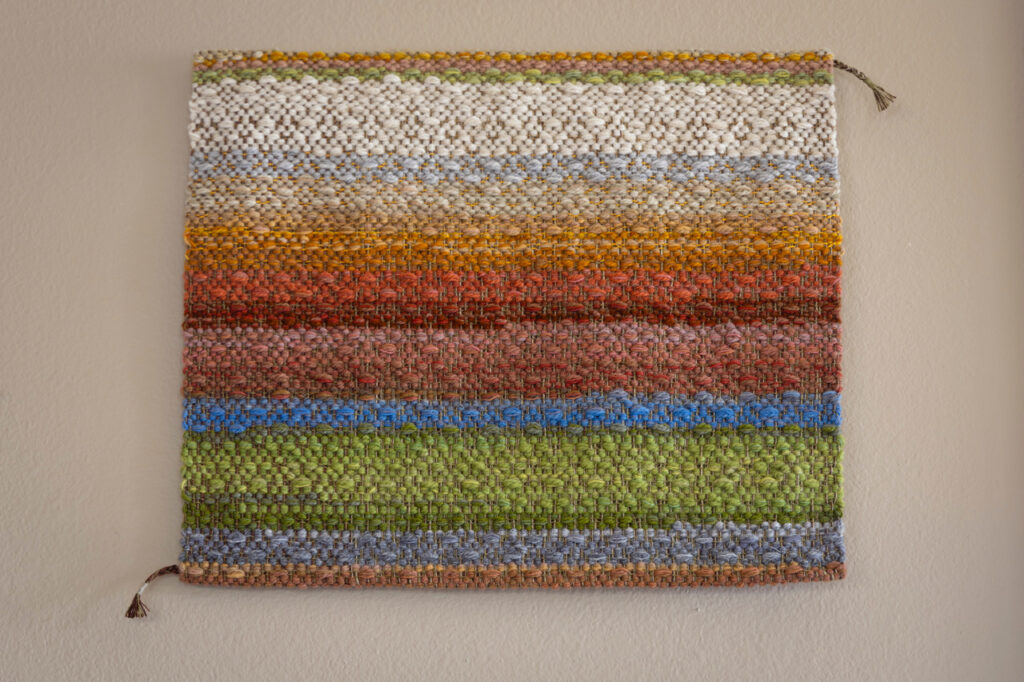
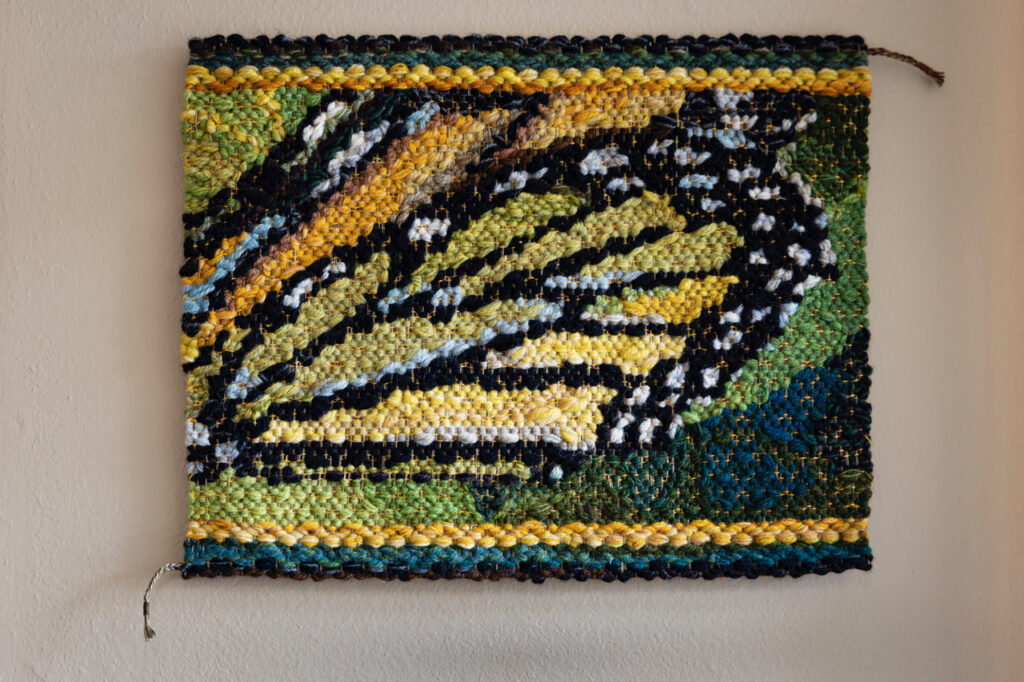
It is good to finish, even if you do it a year later. Now I am really ready to start the next tapestry.
Happy Weaving, Karen

